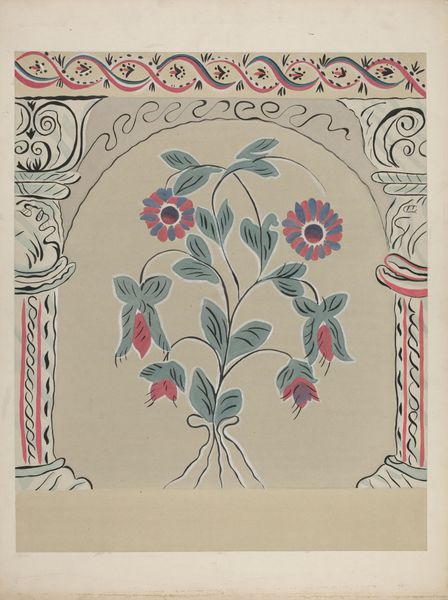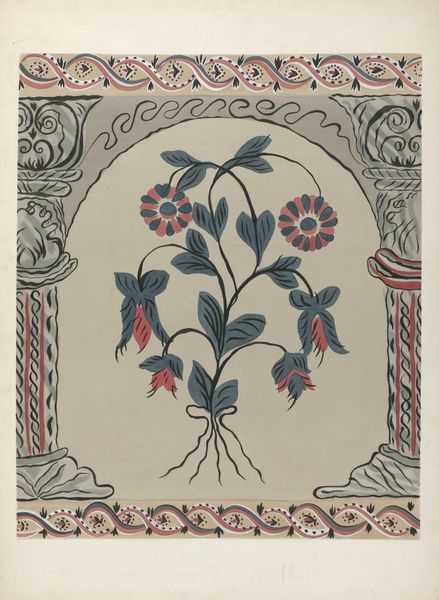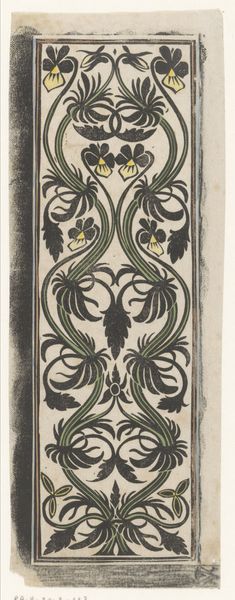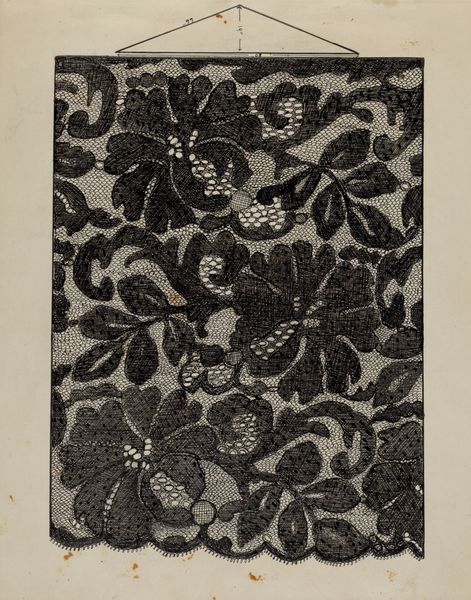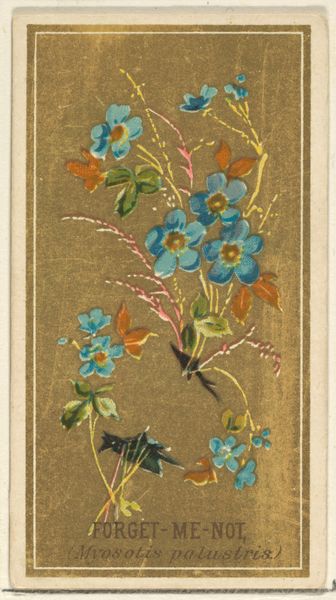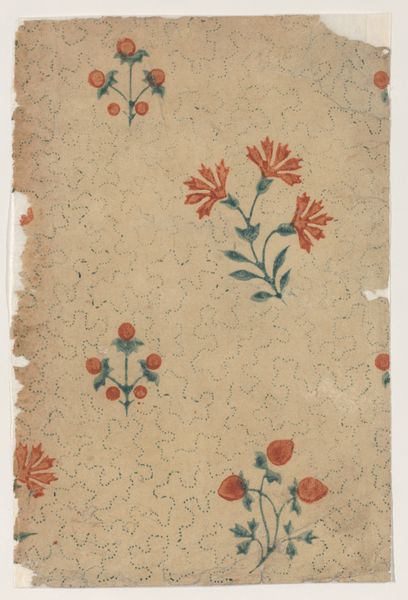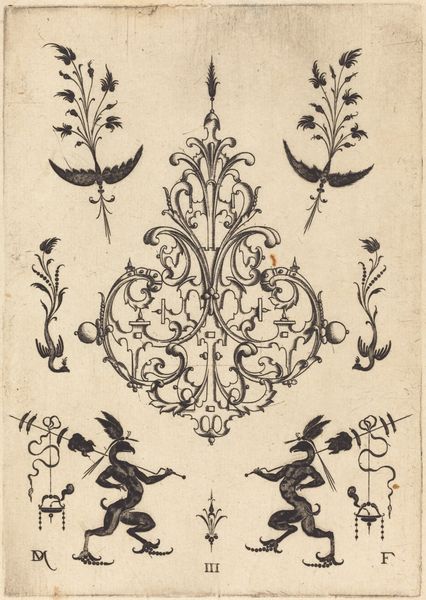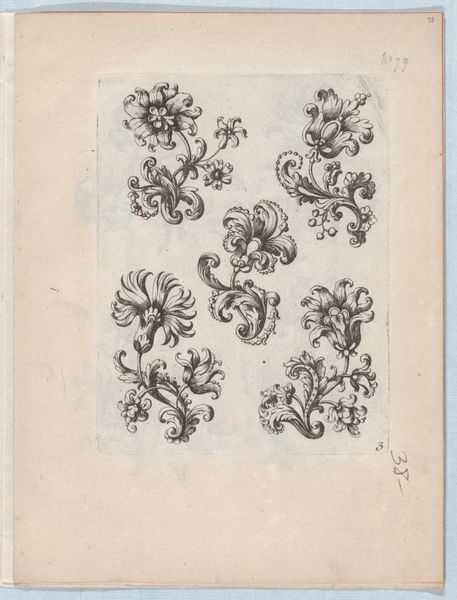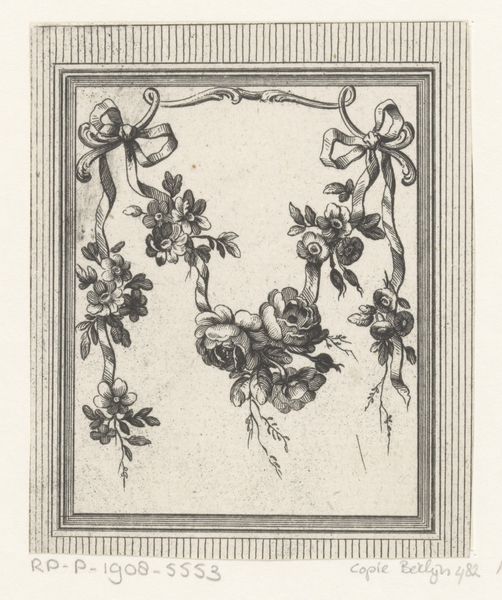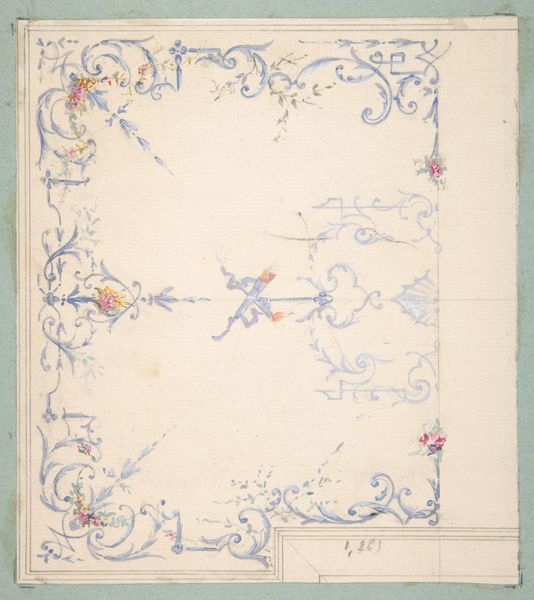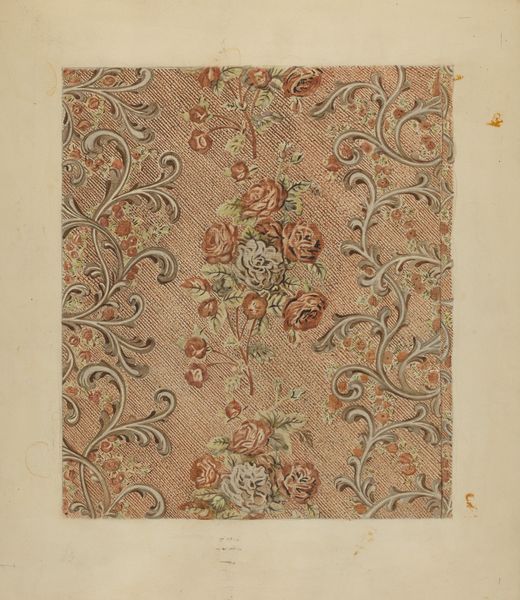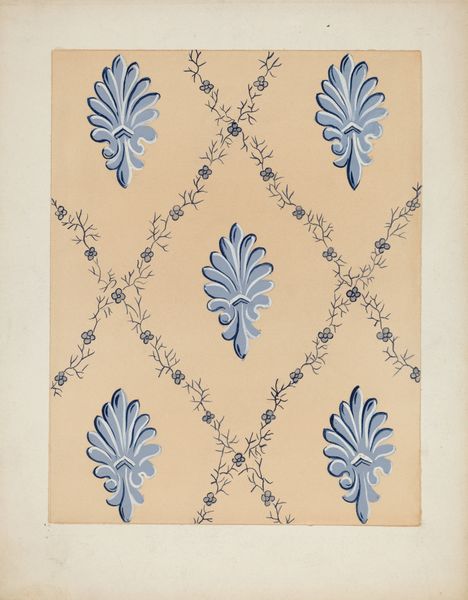
drawing, watercolor
#
drawing
#
water colours
#
watercolor
#
coloured pencil
#
decorative-art
Dimensions: overall: 55.8 x 76.1 cm (21 15/16 x 29 15/16 in.)
Copyright: National Gallery of Art: CC0 1.0
Curator: Here we have a captivating watercolor and colored pencil drawing titled "Free Hand Decorated Wall," created around 1940 by Michael Lauretano. What catches your eye about it? Editor: The muted palette gives it such a quietly somber feeling, almost nostalgic, like a memory faded around the edges. It's like gazing into a vintage photograph of a once-vibrant room. Does the artist provide context? Curator: The work's essence lies in decorative-art tradition. Lauretano showcases the era's stylistic grace and, by hand-drawing rather than using print, insists upon unique design. Editor: That hand-touched element is fascinating! Those looping vines and simplified floral arrangements carry an almost primitive quality, despite the delicate materials. It makes me wonder about the intended audience – a home, perhaps, aiming for casual elegance? Curator: Floral motifs such as this often function symbolically, representing notions of renewal, growth, or domesticity. During times of societal upheaval – like the 1940s – people gravitated towards familiar imagery that offers comfort and constancy. Editor: So the deliberate use of flowers wasn't just aesthetic, it was practically a form of emotional architecture. The grey-blue feels oddly calming too. Curator: Indeed! Even now it holds us in a contemplative state. In a way it serves as an elegy, preserving a delicate historical memory of both resilience and creativity. Editor: Well, considering that these visual icons are a powerful, symbolic reminder of shared sentiments that connect our humanity across history...I'm left wondering what kinds of hand-drawn symbols define OUR generation! Curator: A delightful pondering. It just reveals how the meaning of objects or images lies not in form but interpretation and the ways art provides the prompt to do so.
Comments
No comments
Be the first to comment and join the conversation on the ultimate creative platform.
